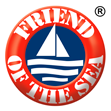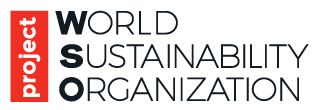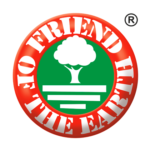Peixe De Barbatana
Kurzeme Fishing Producers Organization
Information
Audit
Fishery description
Information
Species scientific names: Sprattus sprattus, Clupea harrengus
FAO area: 27
Fishing method: Pelagic trawl
Audit
Fishery description
S.sprattus
European sprat – Pelagic trawl – FAO 27
Species: Sprattus sprattus
Gear type: Pelagic trawl
Fishing Area: FAO Area 27 Atlantic North East – Subarea III; Subdivision 28.1 (Gulf of Riga)
Fishery management: The North East Atlantic Fisheries Commission (NEAFC) is the competent regional organisation for fisheries management in the region (FAO Statistical Area 27). NEAFC takes advice from the International Council for the Exploration of the Sea (ICES), the intergovernmental organisation conducting research on marine resources in the North Atlantic.
The fishery is managed by the Ministry of Agriculture Republic of Latvia and more specifically by the Fisheries department.
Stock status: According to the latest stock assessment published in 2016 by ICES, the stock of European sprat in the Baltic Sea is at full reproductive capacity and it is harvested sustainably.
Habitat impact: The fleet uses pelagic trawl set in the water column, without interacting with the seabed and the benthic communities.
Bycatch and discards are considered negligible (ICES 2016).
It is a legal requirement to land all fish caught. There is no minimum size so all the catch is marketed. Unmarketable fish (either too small or not popular) is sold for fishmeal.
Source:
Fisheries Department, Ministry of Agriculture, Republic of Latvia www.Zm.gov.lv
ICES Advice on fishing opportunities, catch and effort. Baltic Sea Ecoregion 2016. Sprat (Sprattus sprattus) in subdivisions 22–32 (Baltic Sea)
C.harrengus
Atlantic herring – Pelagic trawl – FAO 27
Species: Clupea harengus
Gear type: Pelagic trawl
Fishing Area: FAO Area 27 Atlantic North East – Subarea III; Subdivision 28.1 (Gulf of Riga)
Fishery management: The North East Atlantic Fisheries Commission (NEAFC) is the competent regional organisation for fisheries management in the region (FAO Statistical Area 27). NEAFC takes advice from the International Council for the Exploration of the Sea (ICES), the intergovernmental organisation conducting research on marine resources in the North Atlantic.
The fishery is managed by the Ministry of Agriculture Republic of Latvia and more specifically by the Fisheries department.
Stock status: According to the latest stock assessment of herring, published in 2016 by ICES, the stock of Atlantic herring in subdivision 28.1 is at full reproductive capacity and its biomass is above the maximum sustainable yield.
Habitat impact: The fleet uses pelagic trawl set in the water column, without interacting with the seabed and the benthic communities.
Bycatch and discards are considered negligible (ICES 2016).
It is a legal requirement to land all fish caught. There is no minimum size so all the catch is marketed. Unmarketable fish (either too small or not popular) is sold for fishmeal.
Source:
Fisheries Department, Ministry of Agriculture, Republic of Latvia www.Zm.gov.lv
ICES Advice on fishing opportunities, catch and effort. Baltic Sea Ecoregion 2016. Herring (Clupea harengus) in Subdivision 28.1 (Gulf of Riga)
MCB Seafoods*
Information
Audit
Fishery description
Information
Species scientific names: Sprattus sprattus, Clupea harrengus
FAO area: 27
Fishing method: Drift net
Audit
Last audit date: 10/06/2015
Next audit within: 04/08/2018
Status: Approved
Audit Report
Corrective Actions
Fishery description
S.sprattus
European sprat – Pelagic trawl – FAO 27
Species: Sprattus sprattus
Gear type: Pelagic trawl
Fishing Area: FAO Area 27 Atlantic North East – Subarea III; Subdivision 28.1 (Gulf of Riga)
Fishery management: The North East Atlantic Fisheries Commission (NEAFC) is the competent regional organisation for fisheries management in the region (FAO Statistical Area 27). NEAFC takes advice from the International Council for the Exploration of the Sea (ICES), the intergovernmental organisation conducting research on marine resources in the North Atlantic.
The fishery is managed by the Ministry of Agriculture Republic of Latvia and more specifically by the Fisheries department.
Stock status: According to the latest stock assessment published in 2016 by ICES, the stock of European sprat in the Baltic Sea is at full reproductive capacity and it is harvested sustainably.
Habitat impact: The fleet uses pelagic trawl set in the water column, without interacting with the seabed and the benthic communities.
Bycatch and discards are considered negligible (ICES 2016).
It is a legal requirement to land all fish caught. There is no minimum size so all the catch is marketed. Unmarketable fish (either too small or not popular) is sold for fishmeal.
Source:
Fisheries Department, Ministry of Agriculture, Republic of Latvia www.Zm.gov.lv
ICES Advice on fishing opportunities, catch and effort. Baltic Sea Ecoregion 2016. Sprat (Sprattus sprattus) in subdivisions 22–32 (Baltic Sea)
C.harrengus
Atlantic herring – Pelagic trawl – FAO 27
Species: Clupea harengus
Gear type: Pelagic trawl
Fishing Area: FAO Area 27 Atlantic North East – Subarea III; Subdivision 28.1 (Gulf of Riga)
Fishery management: The North East Atlantic Fisheries Commission (NEAFC) is the competent regional organisation for fisheries management in the region (FAO Statistical Area 27). NEAFC takes advice from the International Council for the Exploration of the Sea (ICES), the intergovernmental organisation conducting research on marine resources in the North Atlantic.
The fishery is managed by the Ministry of Agriculture Republic of Latvia and more specifically by the Fisheries department.
Stock status: According to the latest stock assessment of herring, published in 2016 by ICES, the stock of Atlantic herring in subdivision 28.1 is at full reproductive capacity and its biomass is above the maximum sustainable yield.
Habitat impact: The fleet uses pelagic trawl set in the water column, without interacting with the seabed and the benthic communities.
Bycatch and discards are considered negligible (ICES 2016).
It is a legal requirement to land all fish caught. There is no minimum size so all the catch is marketed. Unmarketable fish (either too small or not popular) is sold for fishmeal.
Source:
Fisheries Department, Ministry of Agriculture, Republic of Latvia www.Zm.gov.lv
ICES Advice on fishing opportunities, catch and effort. Baltic Sea Ecoregion 2016. Herring (Clupea harengus) in Subdivision 28.1 (Gulf of Riga)
Omega Protein Inc.
Information
Audit
Fishery description
Information
Species scientific name: Brevoortia tyrannus
FAO area: 21
Fishing method: Purse seine
Audit
Fishery description
USA – Atlantic menhaden – Purse seine – FAO 21
Species: Brevoortia tyrannus (Atlantic menhaden)
Gear type: Purse seine
Fishing Area: FAO Area 21, Northwest Atlantic
Fishery management: The Atlantic States Marine Fisheries Commission (ASMFC) is the competent fishery management organisation.
ASMFC conducts two types of stock assessments: a benchmark stock assessment and a stock assessment update. The former is a full analysis and review of the stock condition, focusing on the consideration of new data sources and newer assessment models. This assessment is conducted every three to five years and undergoes a formal peer review by a panel of independent fisheries scientists who evaluate whether the data and methods used to produce the assessment are scientifically sound and appropriate for management use. The latter incorporates data from the most recent years into the peer-reviewed assessment model to determine current stock status (abundance and overfishing level).
Stock status: Based on the revised reference points recommended by the 2015 benchmark stock assessment, the stock of Atlantic menhaden is neither overfished nor experiencing overfishing. The revised reference points are based on historical performance of the population during the time frame 1960-2012, a period during which the Technical Committee considers the population to have been sustainably fished.
Fishing mortality rates have remained below the revised overfishing threshold (1.26) since the 1960s, and have hovered around the revised overfishing target (0.38) through the 1990s. In 2003, fishing mortality was estimated to be 0.22. Fishing mortality has been decreasing throughout the history of the fishery, and is now 42% below the target.
Habitat impact: The fleet uses purse seine, which is set in the water column, with only occasional interaction with the seabed and hence low impact on the benthic communities.
Bycatch and discards: The fishery maintains records of bycatch and discards. The fishing gear used is highly selective and an excluder device is used to exclude large animals from the tube used to pump fish on board the vessel.
Source:
Atlantic States Marine Fisheries Commission (ASMFC) http://www.asmfc.org/
Omega Protein Inc.
Information
Audit
Fishery description
Information
Species scientific name: Brevoortia petronus
FAO area: 31
Fishing method: Purse seine
Audit
Fishery description
USA – Gulf menhaden – Purse seine – FAO 31
Species: Brevoortia petronus (Gulf menhaden)
Gear type: Purse seine
Fishing Area: FAO Area 31 (Gulf of Mexico)
Fishery management: The Gulf States Marine Fisheries Commission (GSMFC) is the competent fishery management organisation, responsible of setting policies and conducting the stock assessment.
A stock assessment update was published in 2016, including data from 2012 to 2015 to previous assessment.
Stock status: According to 2016 GSMFC report, the fishing mortality rate decreased during the 1990s and has remained low since then. Spawning stock biomass has increased steadily since the 1990s and has remained high since then. The Gulf of Mexico Gulf menhaden stock is not experiencing overfishing and is not overfished.
Habitat impact: The fleet uses purse seine, which is set in the water column, with only occasional interaction with the seabed and hence low impact on the benthic communities.
Bycatch and discards: The fishery maintains records of bycatch and discards. The fishing gear used is highly selective and an excluder device is used to exclude large animals from the tube used to pump fish on board the vessel.
Source
Gulf States Marine Fisheries Commission (GSMFC) http://www.gsmfc.org/
http://www.gsmfc.org/publications/GSMFC%20Number%20254.pdf
Marine Harvest
Information
Audit
Fishery description
Information
Species scientific name: Pleuronectes platessa
FAO area: 27
Fishing method: Danish seine
Audit
Fishery description
Red rock lobster – Pot – FAO 57
Company: Ferguson Australia Pty Ltd
Species: Jasus edwardsii
Gear type: Pot
Fishing Area: FAO 57, South Australia
Fishery Management:
Primary Industries and Regions South Australia (PIRSA) is the government agency responsible for managing South Australia’s fish stocks. PIRSA manages South Australia’s fish stocks in partnership with key stakeholder groups and the community. A range of management tools are used to protect the State’s fisheries resources. These measures include output controls such as quota restrictions, daily catch limits, minimum and maximum size limits, as well as input controls such as closed areas, closed seasons, gear restrictions, vessel size and capacity restrictions, limited entry provisions, and limitations on the number of people that may assist with fishing operations. A Vessel Monitoring System (VMS) is also used to track the movements of vessels in some fisheries to assist in monitoring compliance with management arrangements.
Regulatory arrangements for the South Australian Rock Lobster Fishery are contained within the Fisheries Management (Rock Lobster Fisheries) Regulations 2006, Fisheries Management (Marine Scalefish Fisheries) Regulations 2006 and the Fisheries Management (General) Regulations 2007. Management of the fishery is described in management plans for the Northern Zone Rock Lobster Fishery (PIRSA 2014) and the Southern Zone Rock Lobster Fishery (PIRSA 2013).
A series of management arrangements have been introduced for the commercial fishery to control the catch of Rock Lobster in South Australia. A quota management system was introduced in the Southern Zone in 1993 and in the Northern Zone in 2003. Input controls including restrictions on the number of pots and seasonal closures are also in place. Minimum legal size limits and protection for spawning females also apply.
Stock Status:
PIRSA publishes the Status of SA Fisheries report, that brings together the best available information about the wild fish stocks.
The most recent status report for both the Northern and Southern Zone Rock Lobster Fisheries assessed the fisheries in the 2012-2013 fishing seasons. The primary measure for stock status in both zones of the South Australian Rock Lobster Fishery is the commercial CPUE of legal-sized Rock Lobster (kg/potlift). CPUE in lobster fisheries is accepted as being representative of lobster abundance and is measured using catch and effort data recorded and submitted in logbook returns.
In 2012-13, the Southern Zone Rock Lobster Fishery CPUE was 0.86 kg/potlift, which placed the catch rate of the fishery within the range considered to be sustainably fished at a TACC of 1,250 t. In 2012-13, the Northern Zone Rock Lobster Fishery CPUE was 0.99 kg/potlift, which placed the catch rate of the fishery within the range considered to be sustainably fished at a TACC of 345 t. On the basis of the evidence available, the Southern Zone Rock Lobster resource in both management units are classified as sustainable.
Habitat Impact:
An Environmental Risk Assessment of the South Australian Red Rock Lobster Fishery was conducted in 2011. The assessment ranked the risk to Red Rock Lobster as moderate; and the risk of capture of threatened, endangered and protected species in the Northern Zone (specifically Australian sea lions) as moderate. Pots are equipped with metal spikes to prevent sea lions pups to enter the trap. It did not identify any general ecosystem risks from the impacts of fishing (PIRSA 2011). The moderate and higher risks have strategies outlined in the management plan to address those risks.
References:
PIRSA http://www.pir.sa.gov.au/fishing
http://www.pir.sa.gov.au/fishing/publications/status_sa_fisheries_report
MCB Seafoods*
Information
Audit
Fishery description
Information
Species scientific names: Solea limanda, Solea solea, Platichthys flesus, Limanda limanda, Scophthalmus rhombus
FAO area: 27
Fishing method: Trammel net
Audit
Last audit date: 10/06/2015
Next audit within: 04/08/2018
Status: Approved
Audit Report
Corrective Actions
Fishery description
United Kingdom – Trammel net – Solea limanda, Solea solea, Platichthys flesus, Limanda limanda, Scophthalmus rhombus – FAO 27 (Atlantic, Northeast)
Fishery client: MCB SEAFOODS LTD.
Fishing area: FAO 27, Subarea 7.d, Eastern English Channel.
Fishing vessels: Under 10 meter artisanal fleet.
Vessels audited on site as fleet samples: NN70; SM300; SM700; NN114; LI575; LI579; H5.
Fishing method: Trammel net.
Certified species:
Scientific name / Common name
Microstomus kitt / Lemon
Solea solea / Dover sole
Platichthys flesus / Flounder
Limanda limanda / Dab
Scophthalmus rhombus / Brill
Management summary
The Inshore Fisheries Conservation Authority (IFCA) and the Department of Environment Food and Rural Affairs (DEFRA) inspect and manage the fisheries in the Eastern English Channel according to European law. The company fleet is operating with a quota approach according to the laws.
Stock status summary
The fishery assessment done by the International Council for the Exploration of the Sea (ICES) has a database for Dover sole, which shows that the stock status of this species is not overexploited and overfished. Available data from the other species show that no more than 10% of the stock is caught.
Bycatch / discards
Vessels are under 10 mt and they are not obliged to the use of logbook. Nevertheless, most of them are filling a traceability paper. The fleet usually uses a mesh size of 11.2 cm, which is greater than the minimum required, to reduce accidental catch of undersized fish. Accidental catches are released alive at sea.
Habitat Impact
The fleet does not operate in Marine Protected Areas. According to the auditor, a quota system is in place for the fisheries and the trammel nets are not affecting the seabed.
Social Accountability performance
The fleet complies with the human rights and national regulations.
Conclusion with reasons for approval
The fleet complies with Friend of the Sea requirements. Even so, the necessity of the entire fleet fill the traceability paper, as well as the importance of reinforcing measures to minimize the loss of fishing nets have been reported and will be inspected at the next audit.
Strandport*
Information
Audit
Fishery description
Information
Species scientific names: Pleuronectes platessa, Microstomus kitt, Glyptocephalus cynoglossus
FAO area: 27
Fishing method: Bottom trawl, Danish seine
Audit
Fishery description
European plaice – Danish seine – FAO 27
Species: Pleuronectes platessa
Gear type: Danish seine
Fishing Area: FAO Area 27
Gear type: Danish seine
Fishing Area: FAO Area 27
Fishery management: The North East Atlantic Fisheries Commission (NEAFC) is the competent regional organisation for fisheries management in the region (FAO Statistical Area 27). NEAFC takes advice from the International Council for the Exploration of the Sea (ICES), the intergovernmental organisation conducting research on marine resources in the North Atlantic.
In Iceland, the Icelandic Marine Research Institute (Hafrannsóknastofnun) also conducts regular research on the status of all major exploitable stocks. For instance, regular sampling is conducted from landings and the individuals length measured and weighed as well as determining their sex and gonad maturity.
In recent years, set TAC has been line with the advised levels. Catches do not overpass the set TAC. Different levels of area closures are in place.
Stock status:
Stock assessment is conducted yearly by MRI. Stock biomass is in an increasing trend while the exploitation rates have been decreasing. In fact, recruitment has been low but steady since 1994. Fishing mortality has declined since 1997 and is at an all-time low, while biomass has slowly increased since 2000 (MRI data published in 2016).
Habitat impact:
Protected, endangered and threatened species are not deemed to be impacted. The seabed is being mapped by MRI.
Discards:
A total discard ban is set within the fishery and all catch is required to be landed. This is monitored in Iceland by the Directorate of Fisheries (Fiskistofa) at the port during unloading, by observers on the vessels, and by the coast guard at sea.
Resources:
Icelandic Marine Research Institute http://www.hafro.is/undir_eng.php?ID=9&REF=2
Icelandic Fisheries http://www.fisheries.is/



